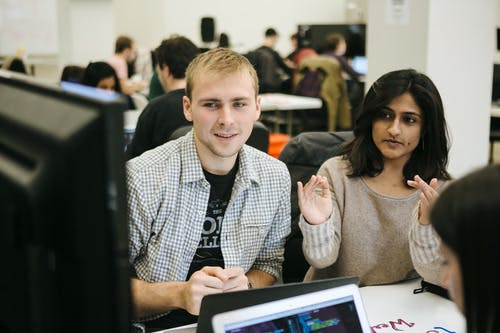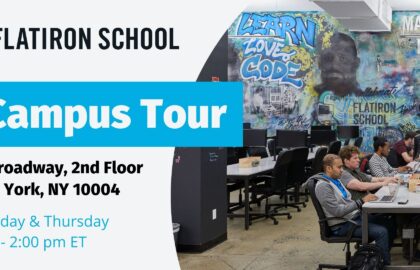Flatiron Alum and Fog Creek Fellow Vaidehi Joshi originally posted this piece on her path from writer to developer in her blog Words and Code. She graduated from Flatiron School in December and has recently accepted a position as a Software Developer at Friends of the Web.
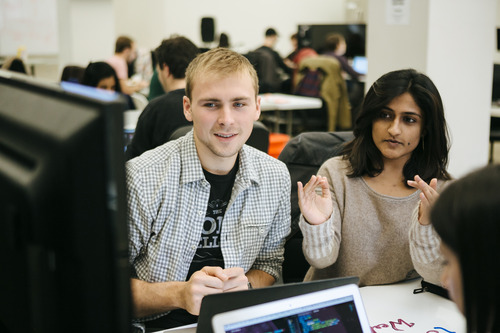
There are a lot of scary things out there. To start, there are lions and tigers and bears. But if you go a bit below the surface, that’s where you’ll hit the dark stuff—the kind of stuff that I was forced to confront when I started as a student at The Flatiron School. Sure, learning how to program is really hard—it’s not just learning another language, it’s learning an entirely new way to think. But, working on code is far easier than working on yourself. My twelve weeks at The Flatiron School pushed me to deal with some tough thoughts, most of which had always lurked in the skeleton closets of my mind: _I don’t know if I can do this. I’m not cut out for this. I’m not prepared. I’m not smart enough. I won’t fit in. I can’t understand. I won’t understand._Most of us have all had these thoughts at some point in our lives, regardless of what we look like or what we do for a living. Some of us have stopped dead in our tracks, sometimes unable to move beyond them at all. But learning to code meant dealing with these fears on a daily basis; at some point, I just stopped listening to them entirely.
The Fog Creek Fellowship
Before I learned to code, I was a writer and a teacher. In other words, I had no background in computer science or software development. Now, it’s already pretty terrifying to enter a new field in which you have no experience. But it gets even more frightening when you realize that only 25 percent of the industry is female and that 71 percent of your coworkers are white. All these facts combined can be fairly paralyzing—it’s no wonder, then, that so many women and minorities choose not to enter STEM fields. After graduating from Flatiron, I found myself facing an entirely new sea of questions: Am I prepared for all these technical interviews? How do I negotiate a salary? What offer should I accept? What’s the best job for me? Do I want to be the only woman in an all-male tech team?_ Luckily, I didn’t have to swim through this alone. Instead, I had a support system gliding along beside me the entire way: The Fog Creek Fellowship. Forged through a partnership with Flatiron School, the Fellowship is dedicated to creating a more diverse and welcoming tech community by nurturing a select group of female Flatiron graduates as they look for their first programming jobs. Fellows are paired with a Fog Creek, Trello, or StackExchange developer—who just so happen to be some of the best coders in the country—and have the opportunity to create long-lasting relationships through pair programming sessions, interview prep, and technical talks.
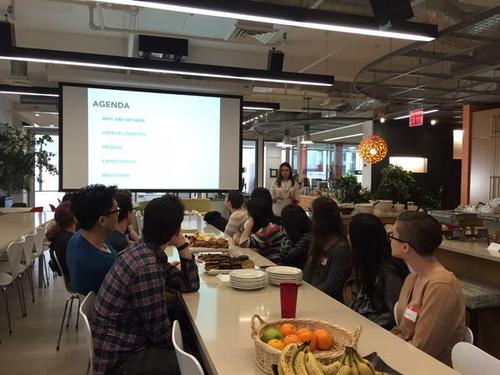
Fearlessness
I wasn’t sure what to expect when I started the fellowship. Thankfully, my phenomenal mentor Ian was full of ideas. Thinking back on it now, I realize that all of our mentors helped us to confront the things that we were the most uncomfortable (read: afraid) of. A lot of us didn’t understand a lot of the computer science concepts that were coming up in technical interviews, so the mentors took the time to review tougher technical topics, and encouraged us to always speak up if ever we were confused.
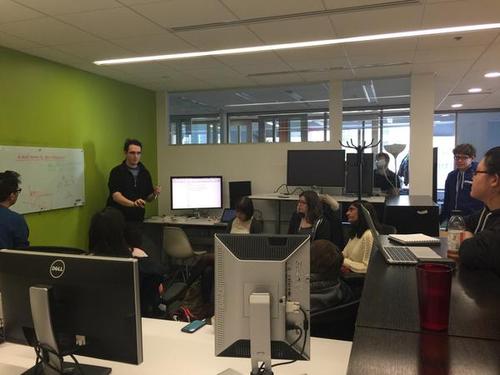
I always wanted to learn more about Objective C and iOS, so my mentor and I built a simple iPhone app that implemented the New York Times API and showed the top stories of the day. It was undoubtedly hard, but everything that’s new and different always is. Ian helped me face my doubts head on, and nudged me to be unafraid of making mistakes or being wrong. All the mentors and mentees hung out together, ate lunch, and talked tech and non-tech topics. And when I was trying to choose between a few different offers, they helped me talk through what I wanted out of my job, and which position would make me happy. We talked about everything from what we wanted our careers to look like in five years, to the pipeline problem for women in tech.
Fortitude
It takes a great deal of grit and strength of mind to endure and accept obstacles that come your way. To be a woman in technology, you need ample amounts of fortitude. There’s really no other way to put it: it’s hard to be a woman in tech. It’s hard to be a person of color in tech. But the only way that we can begin to change the reality of the situation is by bringing in more women and minorities into the industry. Granted, the solution to the problem might come in different shades for various people. Whether that means creating relationships based on trust and openness (such as the ones that we had with our mentors), or providing the resources to build confidence (like technical talks or interview prep), they’re all steps in the right direction. If enough people follow suit, the industry will soon have an entirely new generation of developers and engineers, each of whom will pay it forward. From my own personal experience at Fog Creek Software, I can definitely vouch for the simplicity of a safe, welcoming space for women. If you’re wondering how you can change the industry, I’d say that this is a good way to start. I suppose that it’s a simple thing, really, but it makes a world of difference. Both Fog Creek and the Flatiron School are communities that acknowledge a problem and then proceed to create an environment that mirrors a world that we want to one day live in. I’d consider myself one of the lucky few who has been a part of this incremental change. The Flatiron School and the Fog Creek Fellowship opened so many doors for me—doors that I know I could have never opened on my own. As I take my first step and start a new job as a developer, I’m realizing that the fellowship isn’t really over. It’s just that my role in it is changing. Soon, it’ll be my turn to help open the very same doors for someone else. Hopefully, she’ll be even more fearless than me.
Stay in touch with Vaidehi on Twitter.
